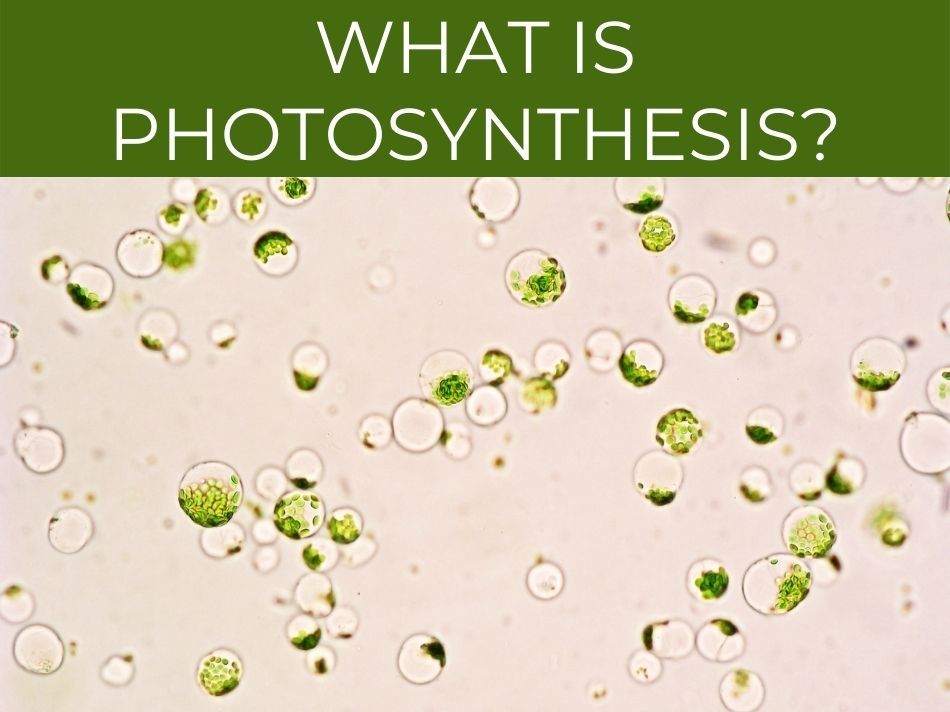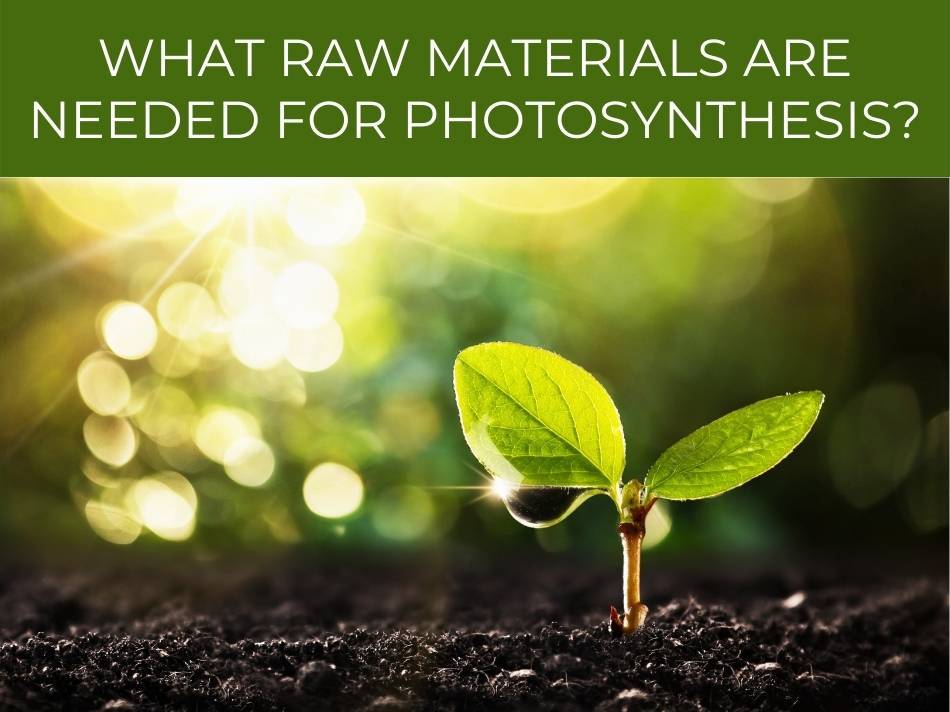The idea of making your own food is not strange, is it? So what if a plant makes its own food? What is different, of course, is that plants can make their food from within. The only outside input is sunlight, which is an integral part of the process.
The inputs of photosynthesis are carbon, hydrogen, and oxygen, in the form of water and carbon dioxide; the main output is a combination of these elements in the form of sugar (glucose). Photosynthesis takes the inputs and converts them into the output.
What goes into photosynthesis and how much oxygen, carbon dioxide, and sunlight are used is a bit of a mystery. In this post, we unpack exactly what photosynthesis is and identify the inputs and outputs of the process.

What are the inputs and outputs of photosynthesis?
There are three inputs for photosynthesis are essentially carbon, hydrogen, and oxygen. These are combined into two substances, water, and carbon dioxide. Sunlight is another essential input. The outputs of photosynthesis are what is produced from the reaction between the inputs. These are essentially sugar and oxygen.
The broader inputs for photosynthesis are water, sunlight, and carbon dioxide.
Energy from sunlight is another important input, as the reaction needs sunlight to occur.
The results of the process of photosynthesis are the substance that is produced.
Photosynthesis results in the production of a compound that is a sugar, called glucose.
This makes the output of photosynthesis glucose.
Check out the full article on the inputs of photosynthesis.

What is photosynthesis?
Photosynthesis is the process whereby a plant uses energy from sunlight to synthesize water (made up of hydrogen and oxygen) and carbon dioxide (made up of carbon and oxygen) to produce sugar, which is the food on which plants depend.
Photosynthesis occurs in plants, algae, and some bacteria that contain chlorophyll.
Chlorophyll is a green pigment that is found in chloroplasts, which occur in all plant cells.
The chlorophyll attracts and traps sunlight.
The plant uses the energy from the sunlight to produce a chemical reaction that synthesizes water and carbon dioxide.
The result of the synthesis is the production of glucose.
So, photosynthesis is where the energy from sunlight is used to produce sugars and oxygen as a by-product.

Is photosynthesis a chemical change?
Photosynthesis is a process where two substances undergo a chemical change in the presence of sunlight energy to produce a new form of chemical energy that a plant uses to grow and survive.
A chemical change occurs when a substance combines with another to produce a new substance.
Carbon dioxide and water are separate substances
When the two are combined and energy from the sun is introduced, a chemical change takes place.
This produces a new substance and new chemical energy in the form of sugar.

What raw materials are needed for photosynthesis?
The raw materials necessary for photosynthesis to occur are chlorophyll, water, carbon dioxide, sunlight, and chlorophyll.
Chlorophyll is a pigment that is found in the chloroplasts in plant cells.
It is the chlorophyll that captures the sunlight necessary for photosynthesis to occur.
Without this pigment, there can be no chemical process that produced food.
Oxygen and hydrogen are the components of water.
They are also both part of the compound that is sugar.
On its own, oxygen is very important in photosynthesis and in the cycle of a plant.
Carbon dioxide contains carbon and oxygen.
These are both key components of a sugar molecule.
The final raw material, sunlight, is an agent for the chemical process to take place.
It does not become part of the sugar molecule.
Sunlight provides the energy needed for the chemical change to occur that produces sugar.
Find out where in the plant photosynthesis occurs.

What are the reactants for photosynthesis?
The reactants for photosynthesis are the elements that are synthesized in the chemical process that produces the new substance. This means they are carbon dioxide and oxygen.
A chemical reaction occurs when two substances are brought together and react against each other to produce a new substance.
During photosynthesis, water and carbon dioxide are the two substances that are used in the chemical reaction.
They are made up of a combination of elements.
At another level, the reactants must be these elements: carbon, oxygen, and hydrogen.
FInd out which organelle performs photosynthesis.

What is the by-product of photosynthesis?
The by-product of photosynthesis is oxygen, as it is one of the elements in the chemical reaction that produces sugar, but there are too many molecules of oxygen present, so some of it is released back into the air.
A by-product is a substance that results from a chemical reaction but is not part of the production of a new form of chemical energy.
Oxygen is released when glucose is formed by photosynthesis, so it is a by-product of the process.
Find out which are the most abundant gases in the atmosphere.

What is the purpose of photosynthesis?
Photosynthesis has a simple purpose: to produce energy in the correct chemical form that a plant needs to survive. The form of energy that is required is sugar, called glucose. This is where a plant gets its energy to grow and survive.
Like any living organism, plants need fuel to grow and survive.
Most living organisms get food from an outside source.
Plants are autotrophs, which means they don’t get food from outside.
They make their own food within their own cells.
This of producing food or energy is called photosynthesis.
This means that the fundamental purpose of photosynthesis is for a plant’s survival.
Plants are an integral part of many ecosystems.
Without plants, entire ecosystems would be destroyed.
This makes a secondary purpose of photosynthesis the production of food, which is essential for life generally.

What is the correct formula for photosynthesis?
The correct formula for photosynthesis is 6CO₂ + 6H₂O = C₆H₁₂O₆ + 6O₂. This indicates the relationship between the initial substances and the format they assume after the chemical reaction.
Formulae consist of two sides that work in relation to each other to indicate the starting point and the result when these are combined.
The formula for a chemical reaction refers to the arrangement of the relevant elements in the correct relevant amounts and configuration.
The two sides of the formula must balance.
The first side of the formula for photosynthesis is a combination of the correct amounts of specific elements in the correct relation.
The second side of the formula is the new configuration of the same elements, which indicates a new substance.
The first stage of the formula for photosynthesis indicates six molecules of carbon dioxide (made up of one molecule of carbon and two of oxygen) and water (made up of two molecules of hydrogen and one of oxygen).
These are combined to form a compound made up of six molecules of carbon combined with twelve molecules of hydrogen and six molecules of oxygen.
Six molecules of oxygen are produced as a by-product.
The correct formula for photosynthesis is: 6CO₂ + 6H₂O = C₆H₁₂O₆ + 6O₂.

Conclusion
Getting the formula right for a chemical reaction is essential, or the end product won’t be what is needed. In photosynthesis, there is no need to worry about the amount of the inputs, because the plant provides all the necessary elements and the sun takes care of the rest.

